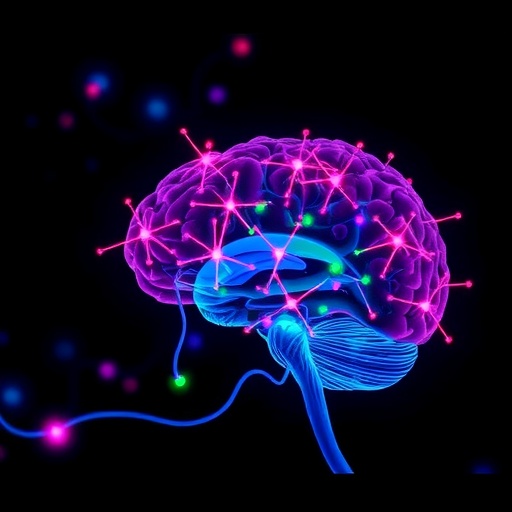Recent advances in regenerative medicine have drawn increasing attention towards the therapeutic potential of exosomes derived from human umbilical mesenchymal stem cells (MSCs). In a groundbreaking study published in the Journal of Translational Medicine, a team of researchers led by Dr. Ru and colleagues have demonstrated that these exosomes can significantly enhance recovery after intracerebral hemorrhage (ICH). ICH, a life-threatening condition characterized by bleeding within the brain, often leads to severe neurological deficits and high mortality rates. The study sheds light on the underlying molecular mechanisms through which these exosomal treatments operate, particularly focusing on the SIRT1 pathway and its role in inflammatory responses.
The human umbilical cord is often viewed as a waste product post-delivery, yet it is a treasure trove of MSCs. These stem cells possess remarkable properties, including the ability to differentiate into various cell types, strong immunomodulatory capacity, and potential neuroprotective effects. In previous studies, MSCs have shown promise in various neurological conditions, but the exact contributions of their exosomal secretions have remained relatively unexplored until now. The current research highlights how these exosomes can achieve significant therapeutic effects even independently of the stem cells themselves, marking a shift in understanding regenerative therapies.
Central to the new findings is the SIRT1 (Sirtuin 1) signaling pathway, a NAD+-dependent deacetylase that plays a critical role in cellular stress responses, inflammation, and overall cellular homeostasis. The study indicates that exosomes derived from human umbilical MSCs can upregulate SIRT1 activity within target cells. This activation appears to have a cascading effect on various signaling pathways, ultimately suppressing the activation of NF-κB, a transcription factor heavily involved in inflammatory responses, and reducing the expression of NOS2, an enzyme that produces nitric oxide during inflammation.
One of the most striking aspects of the research is the dual role of the exosomes in not only promoting neuronal survival but also in regulating microglial activity. Microglia, the resident immune cells of the central nervous system, become activated during ICH, often exacerbating inflammation and tissue damage. The findings suggest that MSC-derived exosomes can restore microglial homeostasis, effectively shifting them from a pro-inflammatory state to a more neuroprotective phenotype. This shift is critical as excessive inflammation in response to ICH can lead to further neuronal death and worsening of outcomes.
The researchers conducted a series of in vitro and in vivo experiments to illustrate these processes. In animal models of ICH, administration of MSC-derived exosomes led to improved histological outcomes, with reduced brain edema and enhanced neuron viability. Furthermore, behavioral assessments post-treatment revealed significant improvements in motor and cognitive functions, underscoring the translational potential of this therapeutic strategy. These findings suggest that treatment with exosomes could eventually be integrated into clinical protocols for managing ICH.
The study did not only focus on the beneficial effects of the exosomes but also meticulously characterized the molecular composition of these extracellular vesicles. The analysis revealed a wealth of bioactive molecules, including proteins, lipids, RNAs, and other metabolites, all of which contribute to their potent therapeutic effects. Such an extensive profiling opens new avenues for pinpointing specific molecular players that could be targeted or enhanced in future therapies.
Challenges do remain, however. While the results are promising, the transition from bench to bedside involves numerous hurdles, including large-scale production, standardization of exosome preparations, and clear regulatory pathways. The researchers emphasized the importance of these considerations in their discussions, pointing out that ongoing studies aiming to validate these findings in larger animal models are paramount.
The potential clinical implications of this research are far-reaching. Current treatments for ICH remain limited, often focusing on surgical interventions and symptomatic management. The introduction of exosome-based therapies offers a novel avenue, potentially transforming how clinicians approach the treatment of such devastating conditions. As the scientific community continues to unravel the complexities of exosomal biology, there lies hope that these tiny vesicles could become staples in the treatment of various neurological disorders.
In conclusion, the study by Dr. Ru and colleagues is an exciting addition to the rapidly evolving field of regenerative medicine and neurology. Their work not only establishes a vital link between MSC-derived exosomes and neuroprotection after ICH but also sets the stage for future explorations into how these biologically active vesicles can be harnessed for maximum therapeutic benefit. With ongoing research and further validation, exosomes stand to redefine the clinical landscape for patients suffering from stroke and other neurological injuries.
As our understanding of exosomes deepens, we may see unprecedented advancements in treatments that utilize these critical cellular players. This could pave the way for innovative therapies that leverage the inherent regenerative capabilities of stem cell-derived exosomes, ultimately leading to better recovery outcomes and enhanced quality of life for patients across the globe.
Strengthening this scientific dialogue is essential; it is through such discussions that we, as a community, can collectively push the boundaries of medical science. As we stand on the brink of a new era in medicine driven by breakthroughs in stem cell research and regenerative therapies, the implications of this work could resonate far beyond the fields of neurology and regenerative medicine.
The future looks hopeful, and the quest for harnessing the power of exosomes is one that promises to yield significant rewards for patient care and treatment strategies in the years to come.
Subject of Research: The therapeutic effects of human umbilical MSC-derived exosomes in intracerebral hemorrhage recovery.
Article Title: Human umbilical MSC-derived exosomes improve intracerebral hemorrhage recovery via SIRT1-driven suppression of NF-κB/NOS2 signaling: coordinating microglial homeostasis and neuroprotection.
Article References:
Ru, D., Zhang, J., Zhang, Z. et al. Human umbilical MSC-derived exosomes improve intracerebral hemorrhage recovery via SIRT1-driven suppression of NF-κB/NOS2 signaling: coordinating microglial homeostasis and neuroprotection.
J Transl Med 23, 1361 (2025). https://doi.org/10.1186/s12967-025-07430-1
Image Credits: AI Generated
DOI: https://doi.org/10.1186/s12967-025-07430-1
Keywords: MSCs, exosomes, intracerebral hemorrhage, SIRT1, NF-κB, NOS2, microglia, neuroprotection, regenerative medicine.
Tags: advancements in stem cell researchbrain hemorrhage recoveryexosomal secretions in therapyexosomes in regenerative medicinehuman umbilical mesenchymal stem cellsimmunomodulatory properties of MSCsintracerebral hemorrhage treatmentmolecular mechanisms in brain recoveryMSCs and neurological conditionsneuroprotective effects of stem cellsSIRT1 pathway in inflammationtherapeutic potential of exosomes





